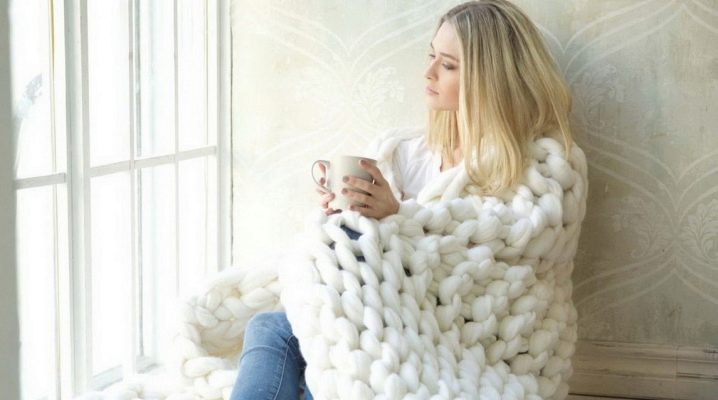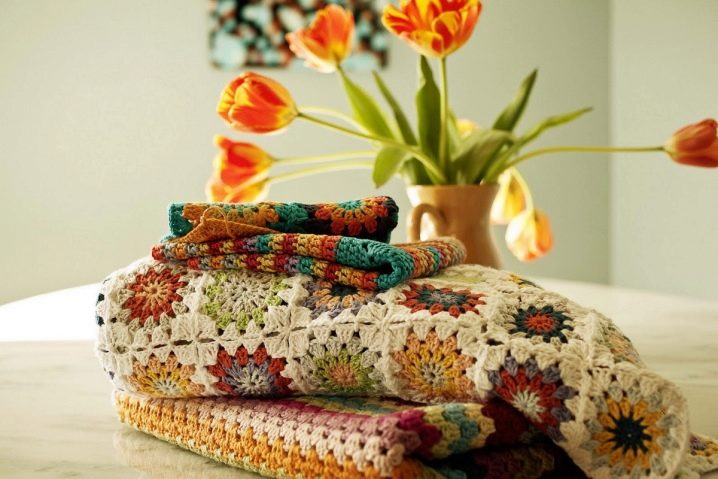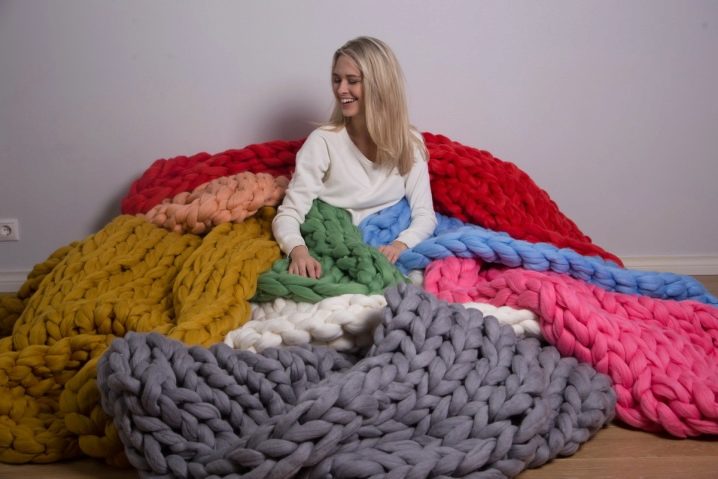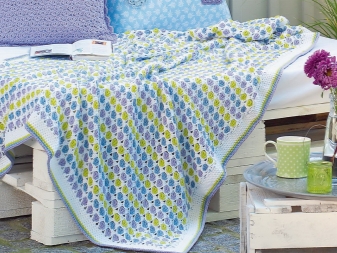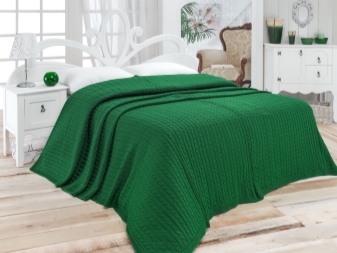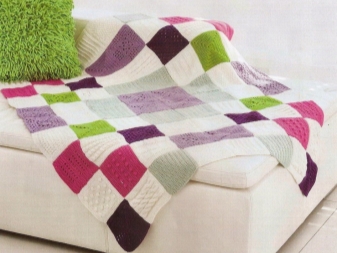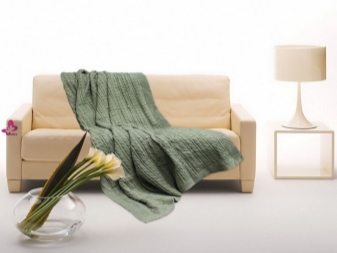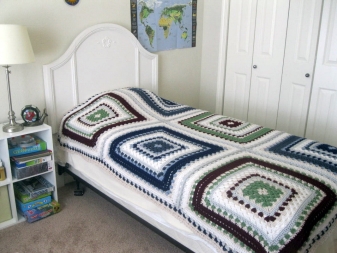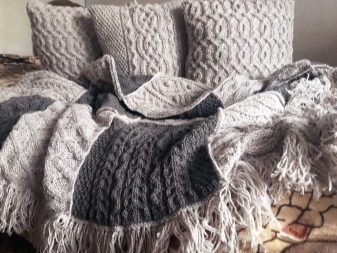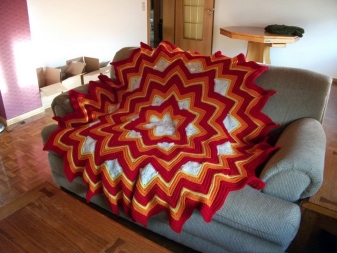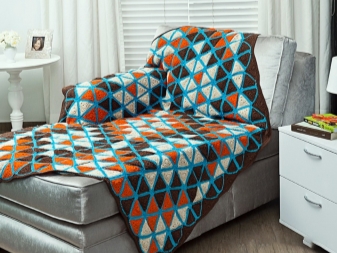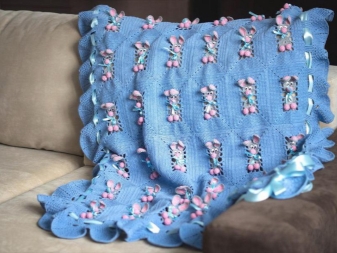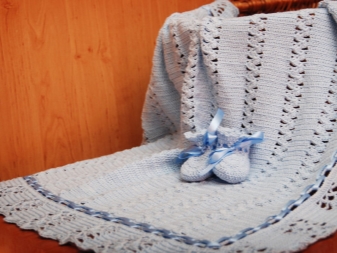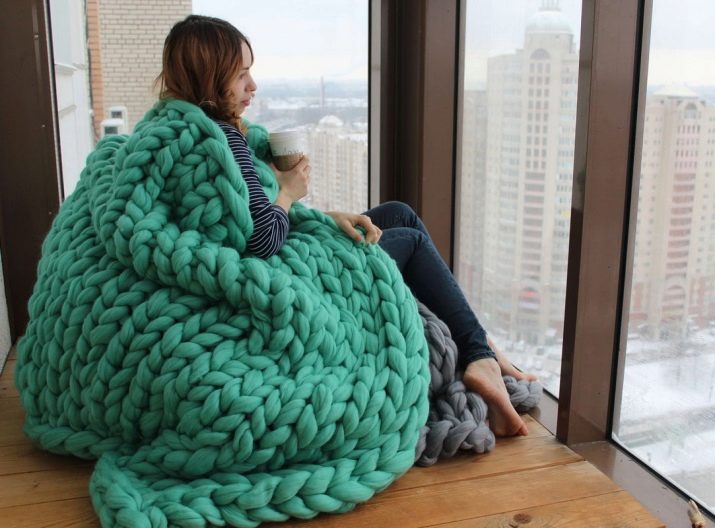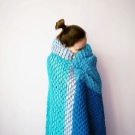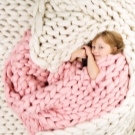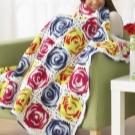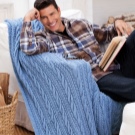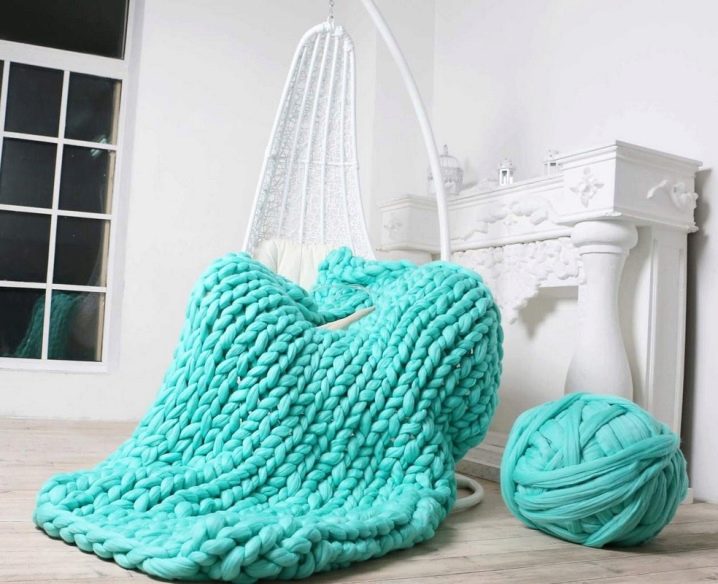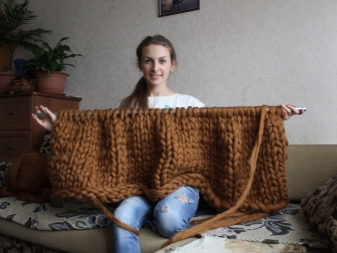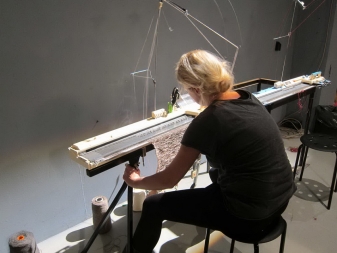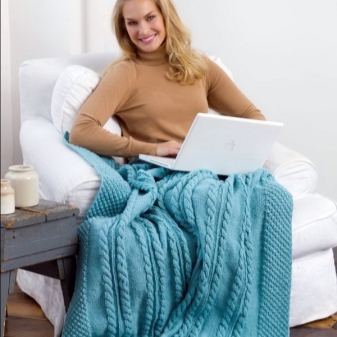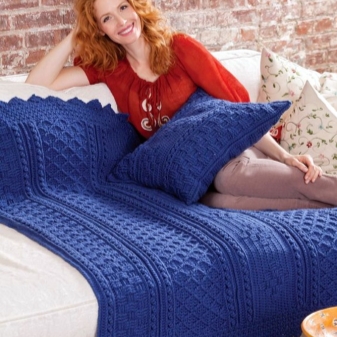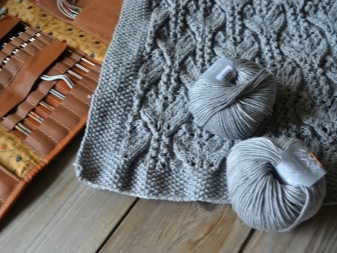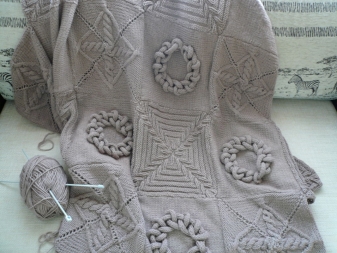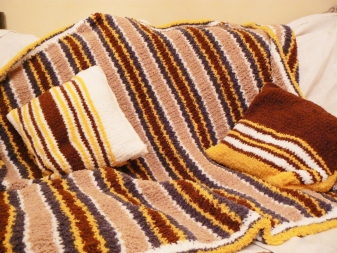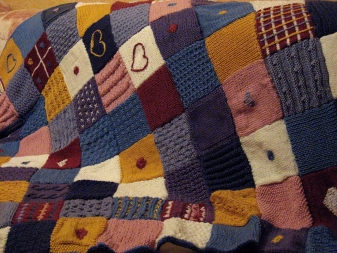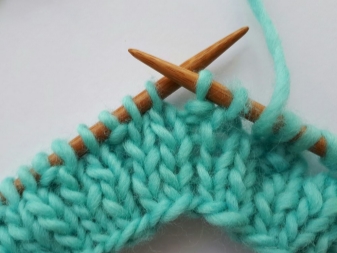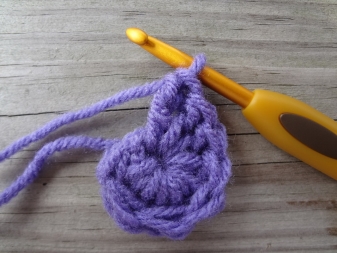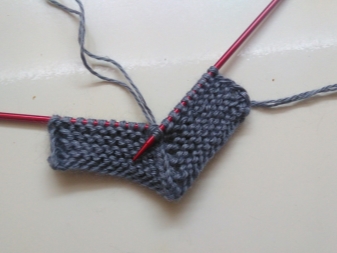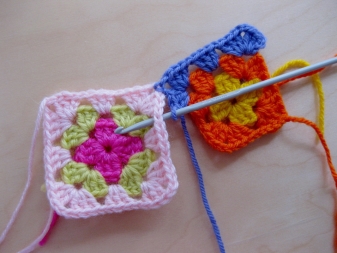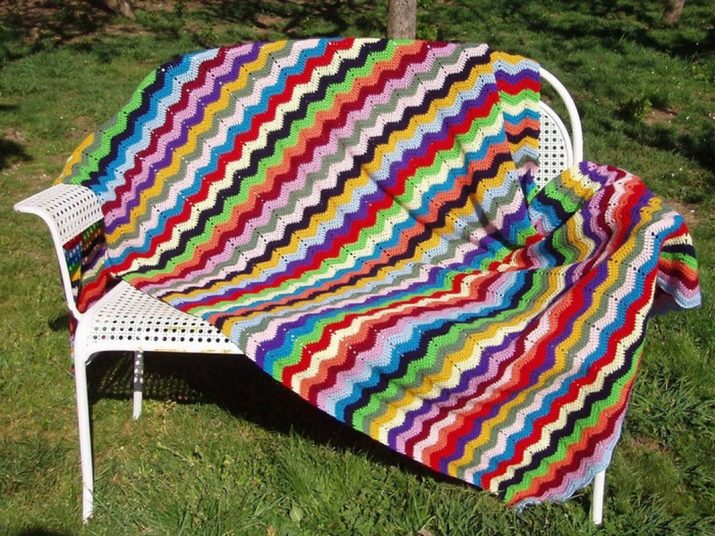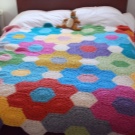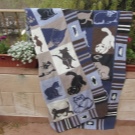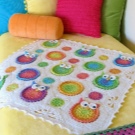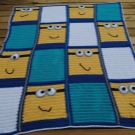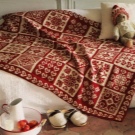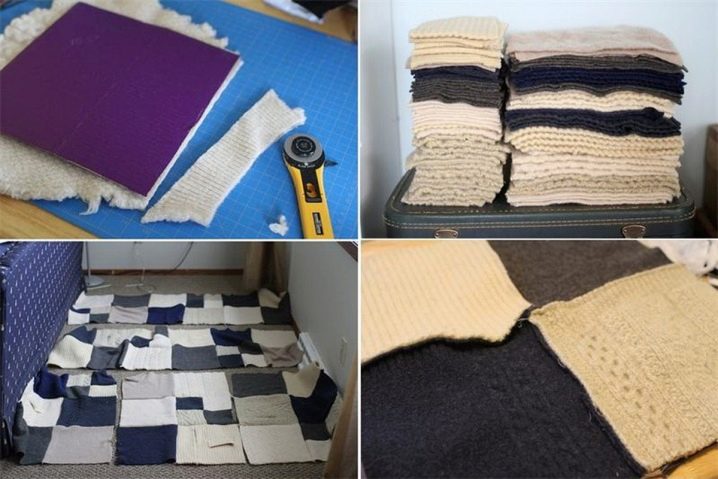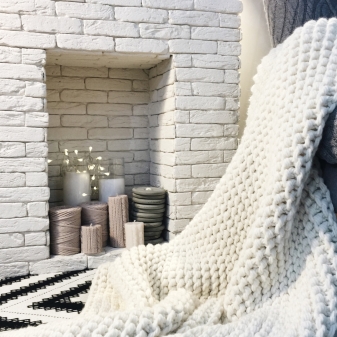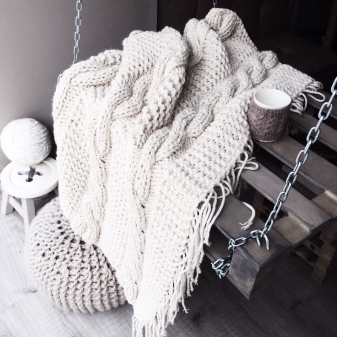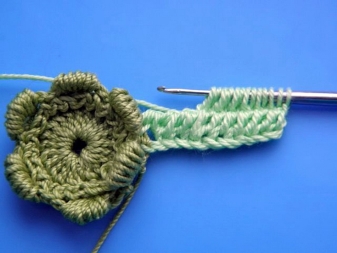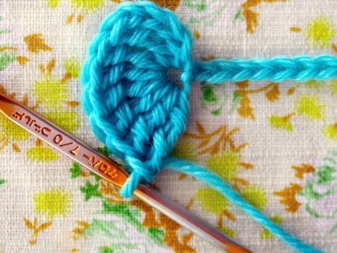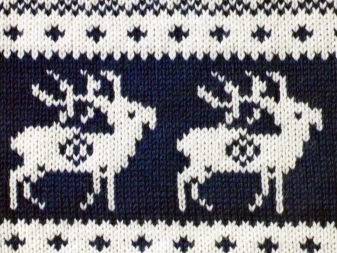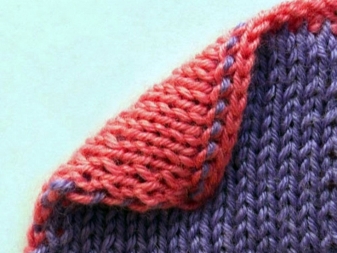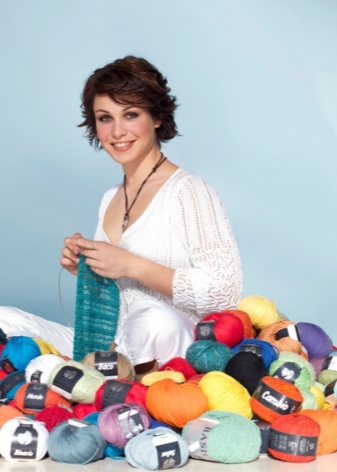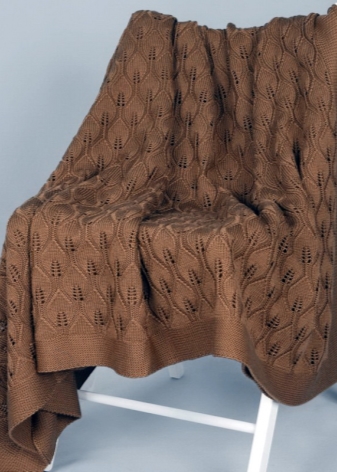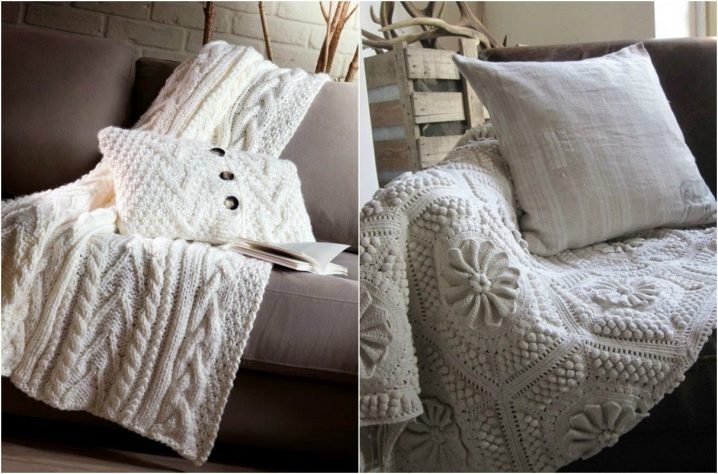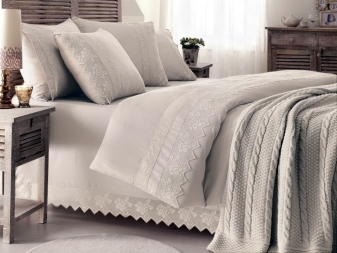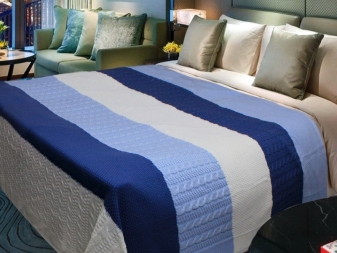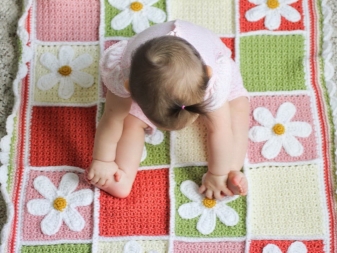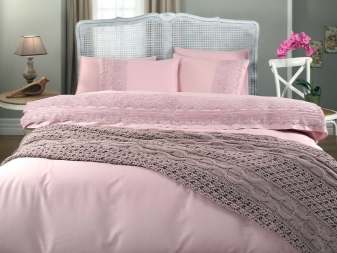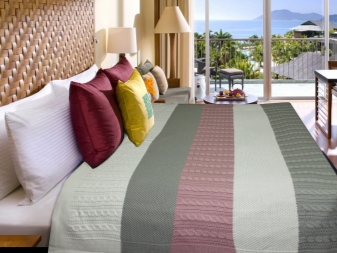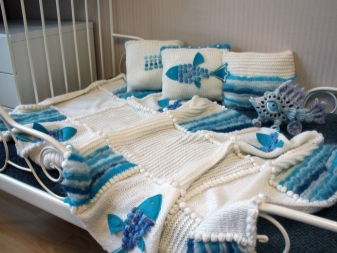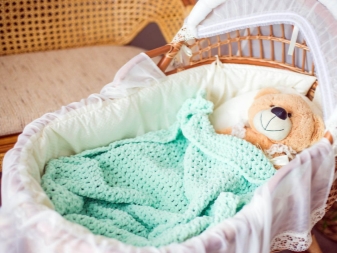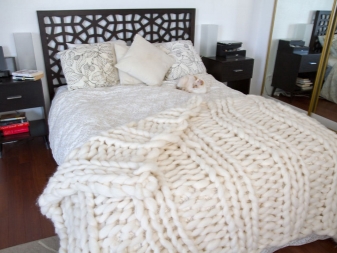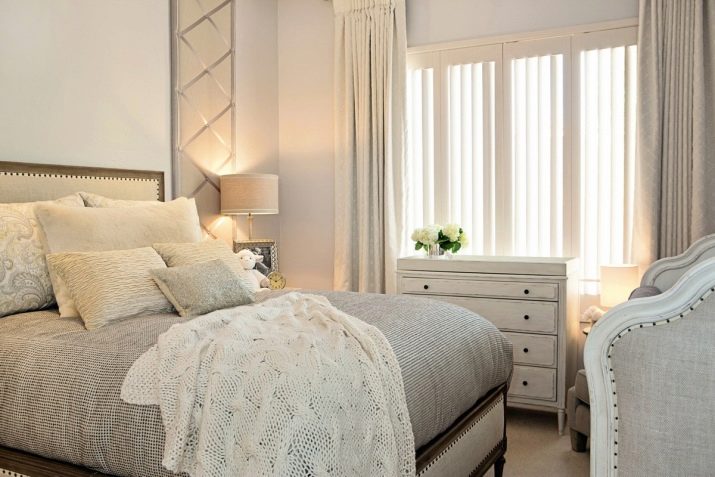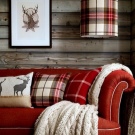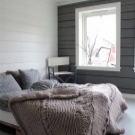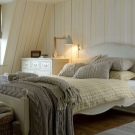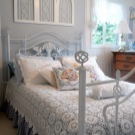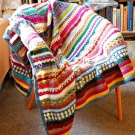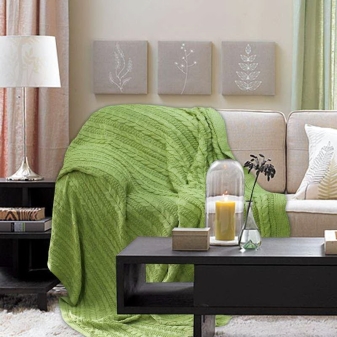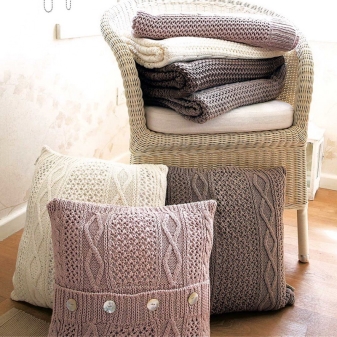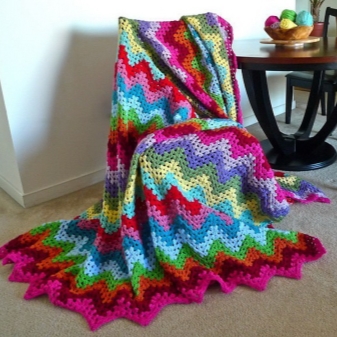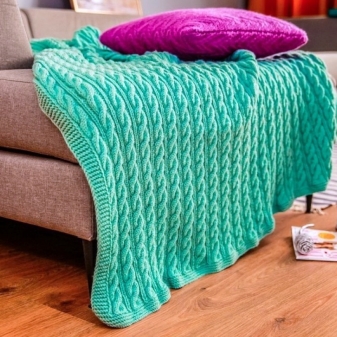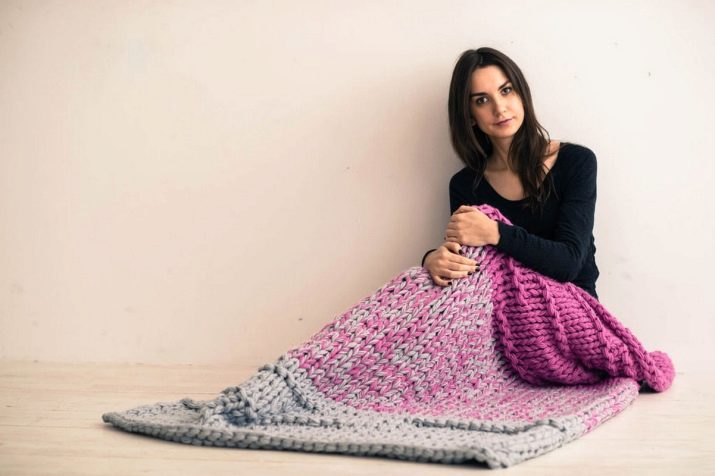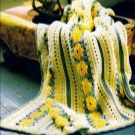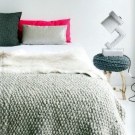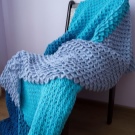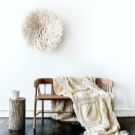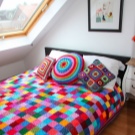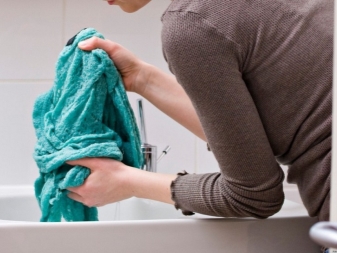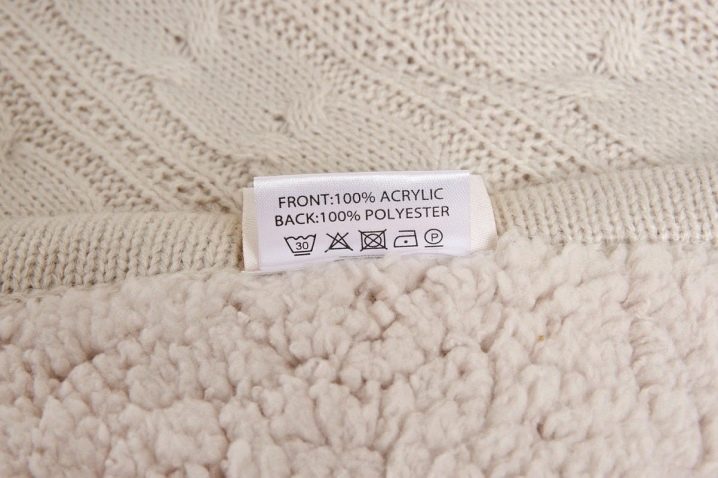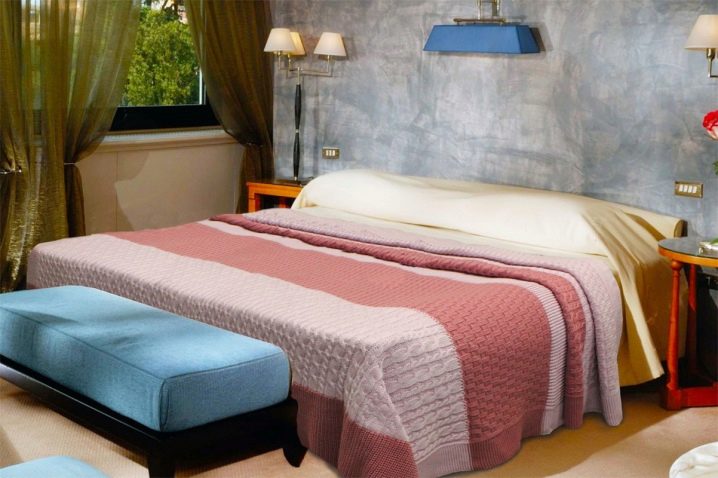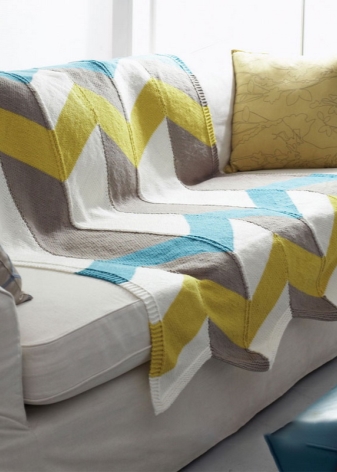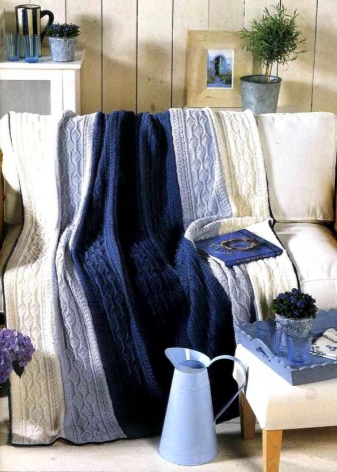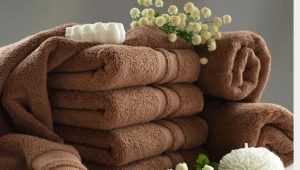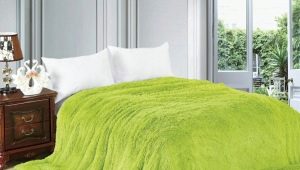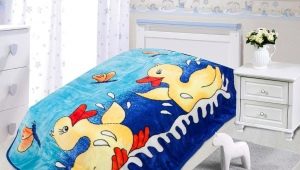Knitted Plaids
It is difficult to imagine a person indifferent to particular functional things. They always attract attention, they want to buy or make their own. Take at least a plaid: thanks to the close attention of designers, such a product is both a stylish room accent and a functional one. Knitted plaids are unique, in their properties and performance characteristics they are not inferior to textile analogues, having a number of advantages.
Special features
Knitted plaids - special types of bedspreads. Their main difference from the usual plaids is a method of manufacturing: these products are knitted fabric. In most cases, such models are made of hypoallergenic material that does not irritate the skin. This is important for allergy sufferers and users with a particularly sensitive dermis, blushing from any contact with yarn. In the production of using soft, pleasant to the body of the thread, not having prickly inclusions.
Knitted plaids have a number of features.They:
- manufactured from raw materials of natural or synthetic origin, as well as their composition (mixed yarns);
- are carried out in a mass way with professional equipment or are made by hand (for yourself and to order);
- have excellent elasticity and the ability to stretch, covering any type of surface without folds (relevant for cover models);
- Depending on the type of yarn, they differ in thickness and relief (can be flat or bulky);
- have no restrictions in the choice of a pattern and flight of fancy;
- they can be one-sided, two-sided, textile-based, fur-based, or be exclusively knitted (depending on the author’s model and fantasy);
- based on the characteristics of the pattern and size, the amount of yarn spent have a different weight;
- They have not only the usual rectangular shape: they can be round, square, oval, hexagonal and unusual (in the form of animal skins, insects, envelopes);
- Differ in complexity and a variety of drawing, allowing to pick up the most interesting variant;
- performed on a different bed size (sofa), taking into account different age groups (for children, adolescents and adults);
- have a rich color palette, due to which they are an unobtrusive accent of any room and are able to visually change the space of a room in the right direction;
- performed in a single-color or contrasting version, which is convenient for the color composition of interior items;
- Depending on the cost of the raw materials used, they differ in different prices, enabling the buyer to choose the most acceptable option, taking into account his own taste and wallet.
Knitted rugs are unusual: you will not meet them in every home. This is not a widescreen extras, because they are popular. And if you take into account the creative approach with which craftswomen make such products, the results can often be called masterpieces of design art.
Often, home-made rugs are decorated with accessories (buttons, lace, fringe, cord, pompoms, embroidery).
Functionality
Knitted plaids - not just beautiful capes. They are multifunctional. Along with the decorative function and the ability to bring fresh colors to the familiar design of the room, they:
- impart a complete and tidy look to a sleeping place (on a bed, a sofa);
- capable of becoming a temporary cover for any upholstered furniture (sofa, armchair, modular design);
- can be used as a light blanket blanket (actual in summer and in the off-season);
- in products for children of infancy they are perfectly transformed into stylish envelopes convenient for going for a walk or to a children's clinic;
- depending on the volume of the canvas, they can become a warm and soft rug, settling on top of the bed mattress or on the floor above the carpet (to support the warmth and hygiene of the baby);
- successfully replace a warm sweater or overalls, carefully enveloping the user who is located at the TV screen (actually in a cold room);
- depending on the composition of the material used, they have healing properties (regarding models made of sheep and camel wool);
- create a cozy and relaxing atmosphere in the room.
Minuses
Alas, the best models of wool are not suitable for everyone: despite the uniqueness of the threads and the best qualities of this material, some users have intolerance. Despite a lot of advantages, knitted plaids have several disadvantages:
- in most cases, they cannot be put on the mattress to vary the degree of softness (when pressure is applied to any relief of the mating, the “imprints” of the pattern will remain on the body, which is harmful to the blood flow);
- knitted plaids require a large amount of yarn in large sizes and a lot of time for manufacturing (at home);
- almost always problematic in care and not resistant to machine wash (need hand wash, delicate wringing, proper drying away from sunlight);
- dry after washing longer than their textile counterparts, needing a large vertical surface (when drying in the usual way they stretch out, deforming the pattern and reducing the width of the canvas);
- are subject to accumulation of dust, which creates a habitat for dust mites that cause allergies.
Types
Thanks to the creative approach, the knitted blanket can be of a special shape (with a hood, ears, buttons for transformation). According to the type of production such a product can be made:
- Manually using knitting needles or hooks;
- By machine on a knitting machine or on production equipment.
The difference between the method of execution is immediately visible: the machine type often involves working with a yarn of lesser thickness, using the maximum number of loops, the abundance of patterns and weaves.Such a product is created faster than the analog manual method, but requires an exact count of the number of loops.
The plaids connected on the production machine are always accurate and uniform. The debugged technology allows to make knitting of any complexity and pattern, however, it is always limited to batch options.
Hand knitting is different in appearance: while the fabric is knitted, the degree of density of the loops may vary. It is rarely as perfect as the machine, but after washing, as a rule, the canvas looks more or less uniform. Manual labor is not organic by any technology, therefore it allows to realize any fantasy of the author, demonstrating the texture and pattern in the best light. In addition, it is easier to manually make composite fragments if the plaid model requires it.
Techniques and patterns
Methods of making a knitted blanket are different. On production, such products are knitted by standard knitting. Homemade production is divided manually into four techniques:
- mating in a straight line (from edge to edge with the transition to the next row);
- in a circle (starting from the chain, adding loops in the corners with each new row);
- diagonally (oblique knitting technique);
- method of creating and assembling individual fragments (of squares).
Each technology is individual, but before making a product, knitting density is always taken into account (it is necessary to calculate the loops) and a description of the pattern.
Depending on the type of yarn, the plaid can be coarse or finely knitted, made with or without a three-dimensional pattern, with a pattern created by different colors of the yarn in the form. The product can be made from:
- contrast stripes;
- geometric shapes;
- Norwegian ornaments;
- ethnic motives;
- New Year's theme;
- funny animals;
- African motives;
- characters from children's cartoons.
One of the interesting techniques of making plaid at home is the assembly of models from old sweaters. In this case, small-sized cloths are cut into squares. The technique of assembling such a plaid requires a sewing machine and generally resembles the work with patches in the strength of Patchwork. Knitted fragments of the same length and width are stitched together, processing the edges on the overlock (so that they do not spill out). So that the plaid had a “marketable” look, it is covered from the wrong side with a lining of fabric or fur.
As for the patterns, they can be any - from simple garter knitting, to bulk compositions.
Especially popular adornments of cloths of knitted plaids are all kinds of braids, plaits, weaves, combinations of strips of alternating facial and purl loops.
The most interesting options for plaid can be created:
- Tunisian knitting - the “Afghan” technique of crochet, in which the pattern is formed on the basis of a two-level pattern of rows;
- Bavarian knitting - crocheting in a circle with fragments or one-piece cloth in the form of a square;
- the Scandinavian way - knitting two-color jacquard garter patterns in the Norwegian theme with the help of knitting needles;
- double-sided viscous - simultaneously with two threads on the needles or one crochet.
The uniqueness of knitting may lie in fragmentation: the canvas can be solid, but with different patterns, which is emphasized by the contrasting color of the yarn and other patterns.
Materials
Yarn for blankets can be absolutely anyone, but without the addition of a metallized yarn, which, although shining, but spoils the texture of the fabric and pricks the skin. Often, to carry out such a curtain, masters use yarn residues, creating a colorful variety.In other cases, buy extra-thick yarn for hand knitting, which allows you to create a unique plaid scarf in a short time. The most sought-after raw materials used for knitted blankets are:
- cotton;
- acrylic;
- wool (Australian merino);
- wool mixture;
- "grass";
- a mixture of angora and acrylic;
- mohair;
- wool with acrylic.
Each type of material is distinguished by its result: “weed” variants connected with knitting needles are very soft, voluminous and pleasant to the body. Woolen and half-woolen rugs, supplemented by a textile base, are worthy of competition with woven blankets.
Cotton models are lightweight, do not irritate the skin and are easy to clean.
Colors
The color palette of knitted plaids is multifaceted. Manufacturers offer a lot of options that can satisfy the most demanding preferences. More often lines consist of dark and practical tones: dark gray, burgundy, mustard, brick, blue, brown. The light range includes classic colors: white and beige, as well as pastel shades (pink, lilac, green, mint, lemon).
Knitted home-made blankets are more often performed in practical and saturated colors.The favorites of the master's color palette are green, terracotta, orange, coral, crimson, melange (multi-colored of two or three tones) color. Products for children are colorful cheerfulness. These are the most interesting and bright plaids that have no boundaries in the choice of color.
Dimensions
The dimensions of the knitted blanket depend on the shape of the bed (sofa) and in each case are individual. For children, this figure can be 70x70, 80x100, 100x100, 70x125, 110x140 cm. Since such a product must cover not only the bed, but also the user, its size should be equal to growth with a margin. The sizes of the product for adults can be 130x170, 140x180, 150x180, 150x200, 160x200, 160x220, 180x200 cm.
Too bulky blankets are less convenient, especially if made by hand.
Styles
The uniqueness of knitted plaids lies in the fact that they fit into any style of the room - from Classic and Minimalism to Glamor and Empire. As a rule, the basis of the idea depends on the pattern or color. The knitted plaid fits into the style most successfully:
- Country music;
- Provence;
- Avant-garde;
- Art Nouveau;
- African;
- Baroque;
- Boho;
- Loft;
- Art Deco;
- Arab.
The type of room does not matter: the blanket is relevant in the bedroom, living room, hall, in the kitchen and even a children's room, a spacious loggia, and a veranda (design of a country house).
How to choose?
When buying a knitted blanket in a store, you should consider a number of nuances:
- certificate of quality and compliance with hygiene standards;
- availability of information on the composition of the material, the manufacturer with the legal address and rules for the care of the blanket;
- product heat index;
- the presence of positive reviews about a particular store and the seller’s warranty;
- compliance with cost and quality (you can view pre-analogues and compare prices).
In order for the product to fit in well with the type and design of the room, it is impossible to do without selecting a shade. If you plan a special functionality (plaid cocoon with a hood, plaid envelope), “fitting” is desirable.
Ordering manual work, it is necessary to specify the design, the density of knitting, the thickness of the relief and the exact size. It is worth paying attention to quality: an excessively loose product is impractical: it is subject to mechanical damage, abrasion, and stretching of the loops. You can take a couple of tips:
- options for winter (wool blankets) are better to choose with a textile lining: they are warmer, and at the expense of the woven base they keep knitted fabric;
- openwork hand-made plaid is less practical than 3D-analogue of thin relief knitting, made on a knitting machine;
- products from fragments have a less durable connection, therefore they require more careful handling;
- products with a large pattern knit faster, but more airy, so they retain less heat (not suitable as blankets);
- woolen things have “dry” heat and lanolin, so if you need a therapeutic effect, you can’t find a better choice (antimicrobial and anti-inflammatory effect, prevention of colds);
- the product for the child should be functional, beautiful, but safe, different flat patterns in the form of hearts, daisies, bears, hares with bulky ears and other subjects are acceptable, but ties, loops, hooks that can injure a baby are unacceptable;
- the thing must be beautiful functional, made of high-quality yarn, not containing toxic dyes.
How to care?
Caring for a knitted blanket is a special topic. Proper and careful operation will extend the life of the product, while maintaining the attractiveness of the appearance and properties of the texture (softness, warmth, volume, relief). As the knitted cover reacts to any washing, it is worth taking note:
- hand washing without effort, twisting with the use of a special powder (selected individually to a particular type of yarn) is preferable;
- no boiling and hot water: this reduces the distance between the fibers and compresses the yarn (especially for wool and semi-woolen threads with a hollow structure);
- after washing, you need to rinse the blanket twice or even three times in order to get rid of the residues of the detergent, as if the fabric is poorly rinsed, the blanket may become hard and start to lose its color, acquiring a characteristic yellowish tint;
- Drying should be natural without the use of heating devices, hair dryers, batteries, iron;
- no brushing can be done with a dry brush: it will pull out loops and lint, forming impartial pellets and “shaggy” on the general background;
- knitted plaid can not be knocked out or shaken in order to get rid of dust (deformation of the loops and the size of the canvas);
- periodically you need to ventilate the blanket in the open air (balcony, loggia): it increases resistance to caking, relieves the product from moisture and unpleasant smell (in models whose material absorbs all smells of the house, for example, cigarettes).
If the blanket is purchased at a store, usually the label indicates care information. Some manufacturers allow machine wash,others claim to apply for dry cleaning with large pollution. The main thing that is important to understand: these products do not wash every day, seeing the slightest speck. Frequent washing will ruin any thing, especially knitted, and even more.
With regards to knitted blankets with a textile additive, it is worth noting that non-compliance with the washing mode can destroy the integrity of the product, causing shrinkage of one of the materials, which is accompanied by the assembly of the other.
Options in the interior
Knitted plaid is a fashionable and stylish accessory:
- Today, these capes are the decoration of upholstered furniture.They do not just complete, but underline the idea of design, setting the tone for the interior. You can decorate the bed in the bedroom with a relief knitted plaid. It will harmoniously fit into the design of the room, if you support the theme of the knitted fabric through decorative pillows. A bright carpet, a bedside lamp floor lamp, a pattern of a sofa cushion in cherry color will enliven the design.
- The idea of repeating a knitted fabric can be varied: Milk plaid with large braids looks great with a pillow of a similar style and a pouf, but without a picture. The selected shade of knitted fabric will allow you to create the appearance of a set,and a small pillow in the form of a mini-pouf of gray color will add variety to the color scheme of the room, saving the style from an abundance of light spots.
- Originally looks knitted blanket with symmetry in the form of wide contrasting bands. Decorating a light sofa, it will become not only a stylish accent of the room, but also a practical cape: having picked up transitions of light and dark tones, it is possible to extend the life of the sofa and the plaid itself. It is easy to create harmony with the available interior items: it is worthwhile to put a couple of flower pots of the same color as the stripes. If they are not there, a picture, a living flower, and even a serving tray will do.
How to knit a thick yarn blanket, see the next video.
